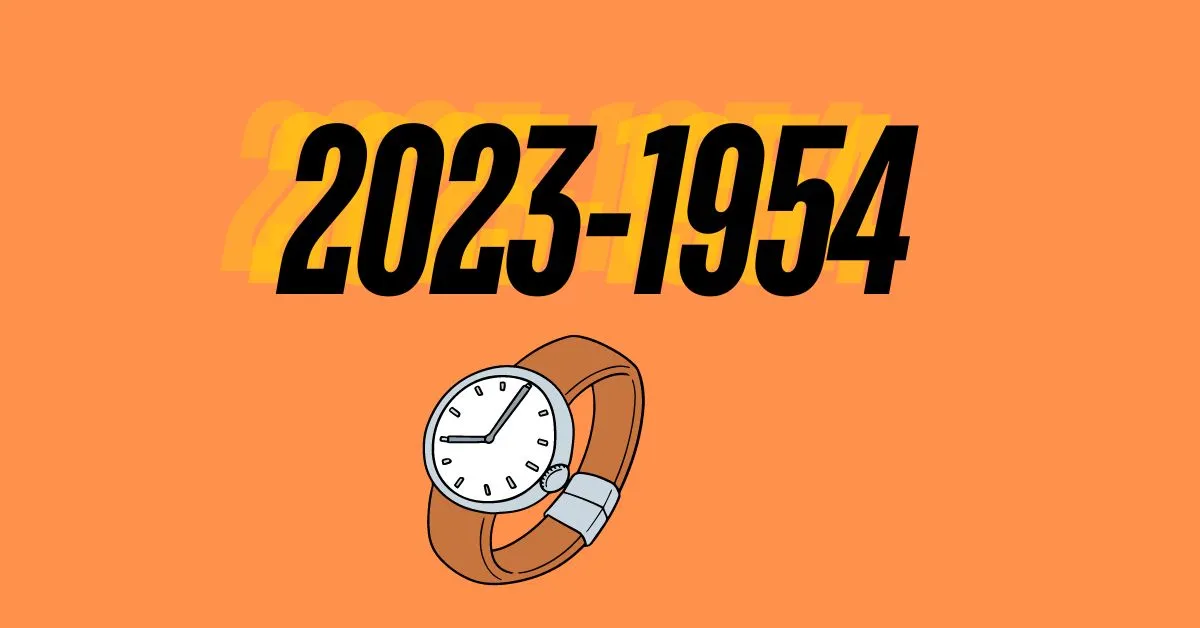The seventy years stretching from 2023-1954 represent an extraordinary period of human history, marked by seismic geopolitical shifts, unprecedented technological leaps, profound social evolution, and a growing awareness of our planet’s fragility. Beginning in the nascent stages of the Cold War, where the world was still reeling from the scars of World War II and grappling with the dawn of the nuclear age, this epoch concluded on the precipice of a new era, defined by digital omnipresence, complex global interdependencies, and a renewed sense of great power competition. It was a journey from a largely bipolar world to a multipolar, intricately connected, yet often fractured, global landscape.
The year 1954 found a world divided and rebuilding. The United States and the Soviet Union stood as ideological titans, their rivalry quickly escalating into the Cold War, a protracted struggle for global influence fought not through direct military confrontation, but through proxy wars, espionage, and a relentless arms race. Decolonization was in full swing, with nations across Asia and Africa shaking off colonial rule, giving birth to a plethora of new sovereign states. This period witnessed the emergence of the Non-Aligned Movement, as many newly independent nations sought a third path, refusing to be drawn into either superpower’s orbit. Iconic proxy conflicts like the Vietnam War (which escalated significantly in the 1960s) and the Soviet-Afghan War defined the ideological struggle, often at immense human cost. The Cuban Missile Crisis in 1962 brought the world perilously close to nuclear annihilation, serving as a stark reminder of the ever-present dangers of the nuclear age.
Beyond the geopolitical chessboard, the Cold War era was a crucible of technological and social change. The space race, fueled by superpower rivalry, pushed the boundaries of human ambition, leading to Sputnik, the moon landing, and a burgeoning understanding of the cosmos. Simultaneously, the transistor revolutionized electronics, laying the groundwork for the digital age, while early forms of computing began to emerge. Socially, the 1960s and 70s were characterized by counterculture movements, civil rights struggles in the United States and elsewhere, and a questioning of traditional norms regarding gender, race, and authority. The demand for equality and justice gained global momentum, forever altering the social fabric of many nations.
The collapse of the Soviet Union in 1991 dramatically reshaped the global order. The Cold War ended, ushering in what some optimistically termed a “unipolar moment,” with the United States as the sole superpower. This period saw an unprecedented acceleration of globalization. Economic integration deepened as trade barriers fell, multinational corporations expanded their reach, and the internet, initially a niche academic and military network, began its inexorable march into public consciousness. The dot-com boom of the late 1990s epitomized this new digital frontier, promising boundless connectivity and economic prosperity. However, this era was not without its shadows, as regional conflicts in the Balkans and the Rwandan genocide highlighted the enduring challenges of ethnic strife and humanitarian crises in a world no longer strictly defined by Cold War allegiances.
The turn of the 21st century, particularly with the seismic events of September 11, 2001, marked a new chapter. The “War on Terror” dominated the geopolitical agenda for nearly two decades, leading to protracted conflicts in Afghanistan and Iraq, and a global reorientation towards counter-terrorism efforts. This period also witnessed the rise of non-state actors as significant threats, challenging traditional notions of state-centric warfare. Economically, the world experienced both boom and bust, culminating in the 2008 global financial crisis, a stark reminder of the interconnectedness of international markets and the vulnerabilities within the global financial system. The crisis prompted a reassessment of regulatory frameworks and highlighted the growing economic influence of emerging economies, particularly China and India, which began to challenge established economic hierarchies.
The digital revolution, which had its roots in the late 20th century, exploded in the 21st. The proliferation of smartphones, social media platforms, and cloud computing transformed communication, commerce, and daily life. Artificial intelligence, big data analytics, and biotechnological advancements began to transition from science fiction to tangible realities, promising both incredible progress and new ethical dilemmas. This pervasive digital connectivity, while fostering unprecedented levels of information sharing and collaboration, also contributed to social and political polarization, the spread of misinformation, and challenges to democratic norms in many parts of the world.
As 2023 approached, the world grappled with a confluence of pressing issues. Climate change, once a distant threat, became an undeniable reality, demanding urgent global action. Extreme weather events, rising sea levels, and biodiversity loss underscored the urgency of transitioning to sustainable practices. Global health crises, such as SARS, MERS, Ebola, and most significantly, the COVID-19 pandemic, demonstrated the fragility of global health systems and the profound societal and economic disruptions that pandemics can inflict. The pandemic, in particular, exposed existing inequalities and highlighted the critical importance of international cooperation in the face of shared global threats.
Geopolitically, 2023 found a world characterized by a renewed sense of great power competition, particularly between the United States and China, spanning economic, technological, and strategic domains. Regional conflicts, such as the ongoing war in Ukraine following Russia’s full-scale invasion in 2022, underscored the enduring challenges to international peace and security. The period also saw the rise of various forms of populism, challenging established political orders and sometimes leading to increased nationalism and protectionist tendencies.
In conclusion,
The journey from 2023-1954 was one of continuous, often dizzying, transformation. From the shadow of the mushroom cloud to the ubiquitous glow of smartphone screens, the world underwent a metamorphosis that redefined human interaction, economic systems, and geopolitical power dynamics. While immense progress was made in science, medicine, and human rights, the era also bequeathed a complex legacy of environmental degradation, persistent inequalities, and renewed geopolitical tensions. As the world moved beyond 2023, the challenges and opportunities inherited from this extraordinary seventy-year epoch continue to shape the contours of our collective future, underscoring the accelerating pace of change and the enduring imperative for global cooperation and understanding.


